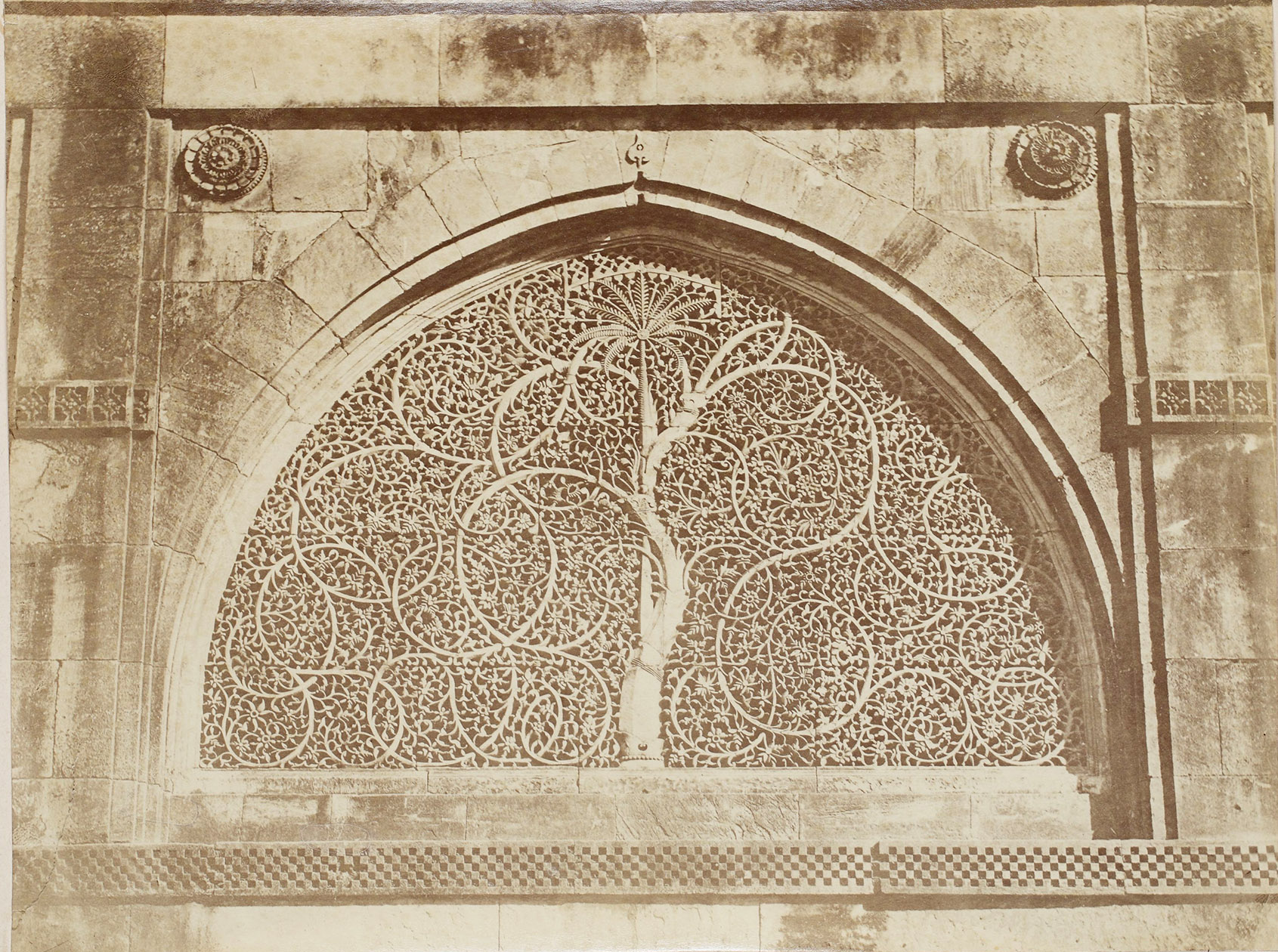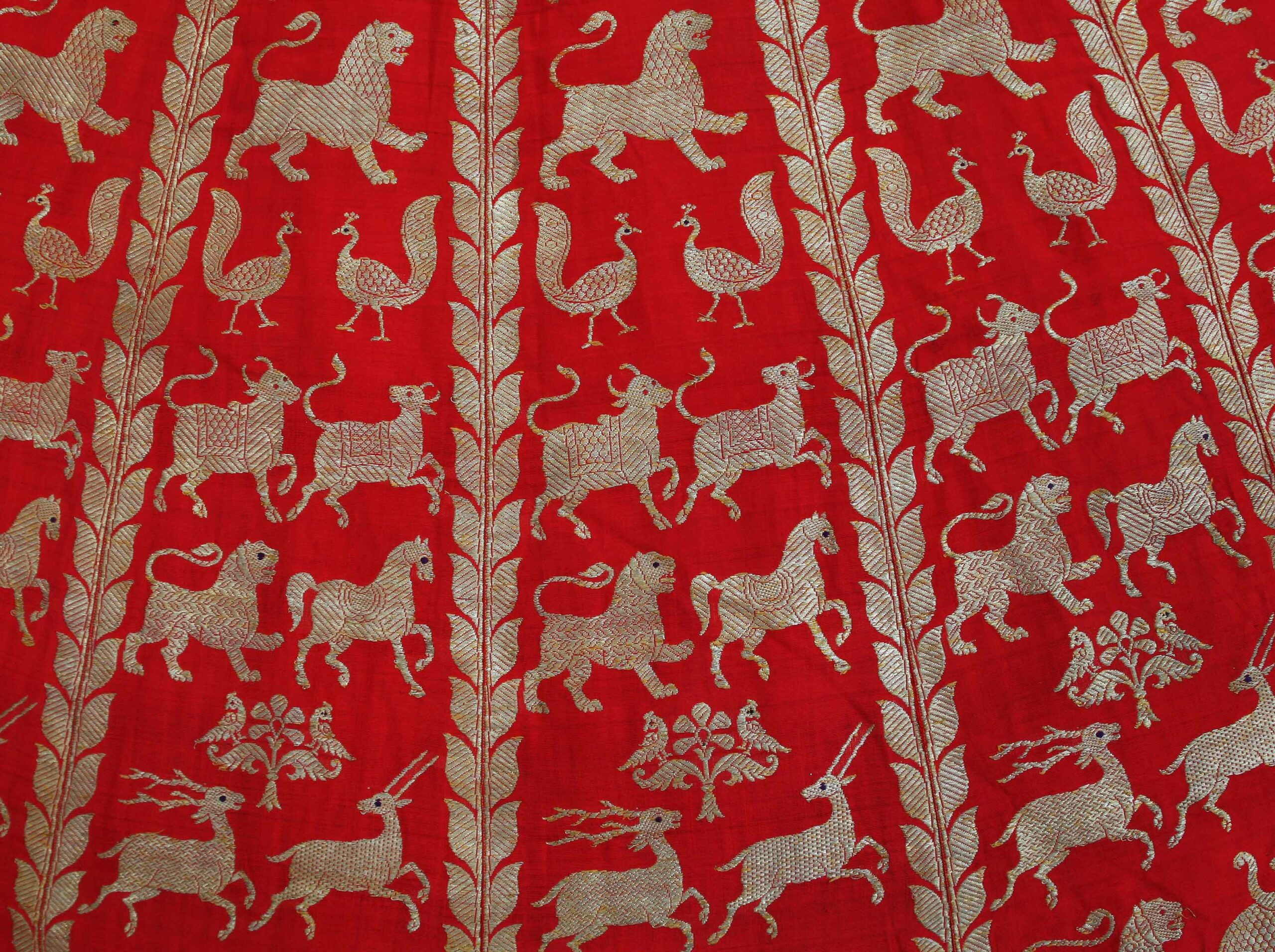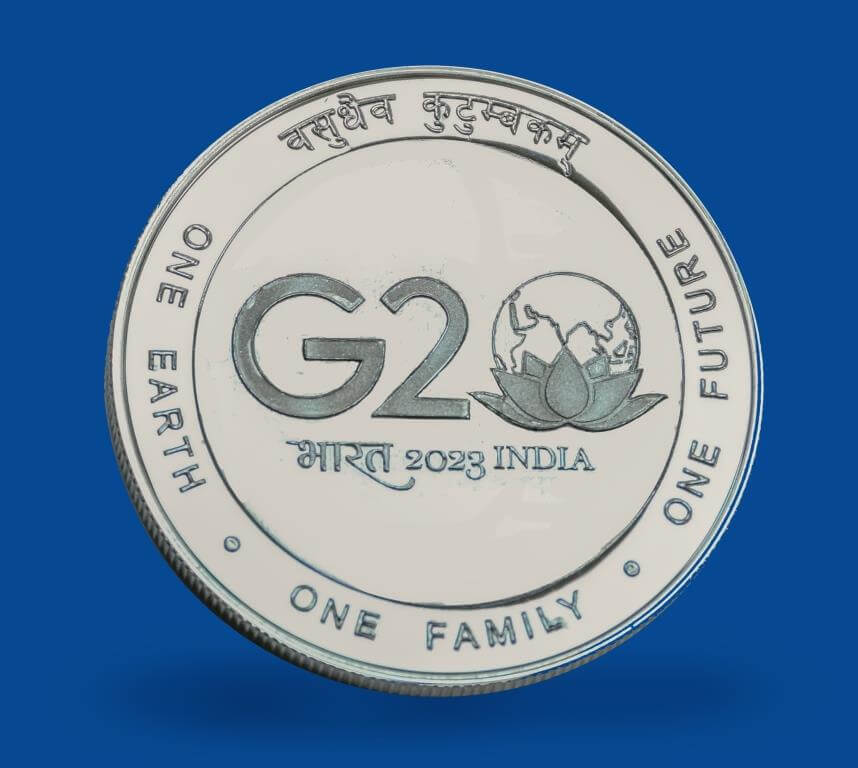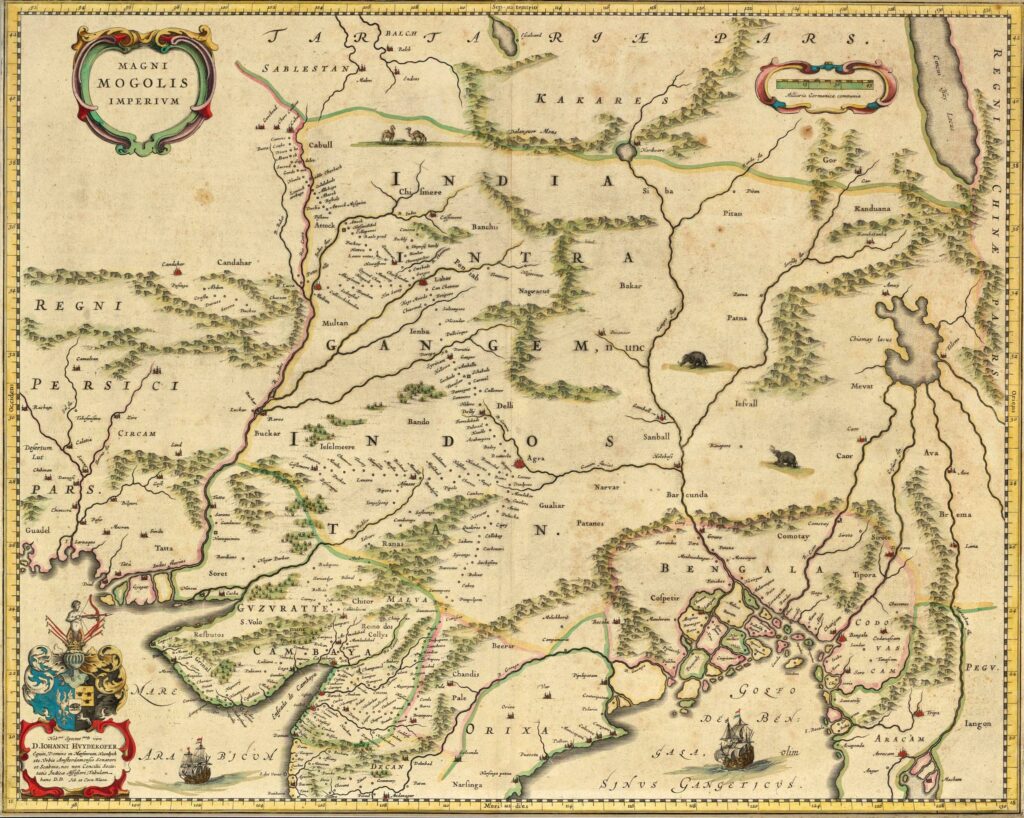
Magini Mogolis Imperium (Great Mughal Government), 1640, Willem/Joan Janszoon Blaeu, © Sarmaya Arts Foundation. (2021.12.5)
All along the highways of medieval commerce in the Subcontinent, from the Eurasian Silk Road to the historic Grand Trunk Road, lay a series of rest-stops and inns where caravans of travellers, pilgrims and traders could break their journey. These were called caravanserais or simply sarai. They were prevalent in the Islamic world, particularly in Mughal India, and typically built by wealthy benefactors and rulers to provide shelter, food and lodging for subjects on the road. The institution of the sarai played a pivotal role in the growth of commerce for empires like the Mughals.
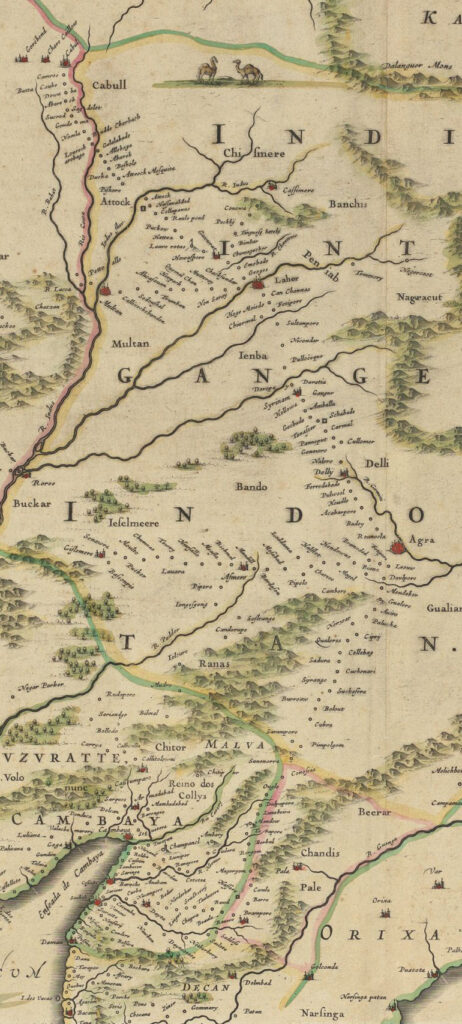
Sarais or travellers’ rest-stop marked along a route in Mughal India, from the map ‘Magini Mogolis Imperium (Great Mughal Government)’, 1640, Willem Joan Janszoon Blaeu © Sarmaya Arts Foundation
While sarais have always existed in some form or the other in India, it was Sher Shah Suri of the Sur empire who institutionalised the practice by constructing sarais at every two kilometres for travellers on the road from Punjab to Bengal. He is said to have built 1,700 sarais on various roads throughout his kingdom, a tradition the Mughals would continue. Emperor Akbar took it upon himself to provide comfort and welfare to his subjects on the road, once ordering that in the sarais on the high roads, free food and lodging should be provided to those who cannot pay their way. Dr Lubna Irfan, a research scholar from Aligarh Muslim University, says, “The Mughals borrowed very heavily from Turkish and Persianate worlds and the word sarai also stems from Persia, even though concepts of dharamshaala and resting places pre-date this era. Taking care of travellers and traders was considered an important public service to be performed by the ruling classes. The difference is just that the Mughal structures have survived and been written about, which is why we know more about them.”
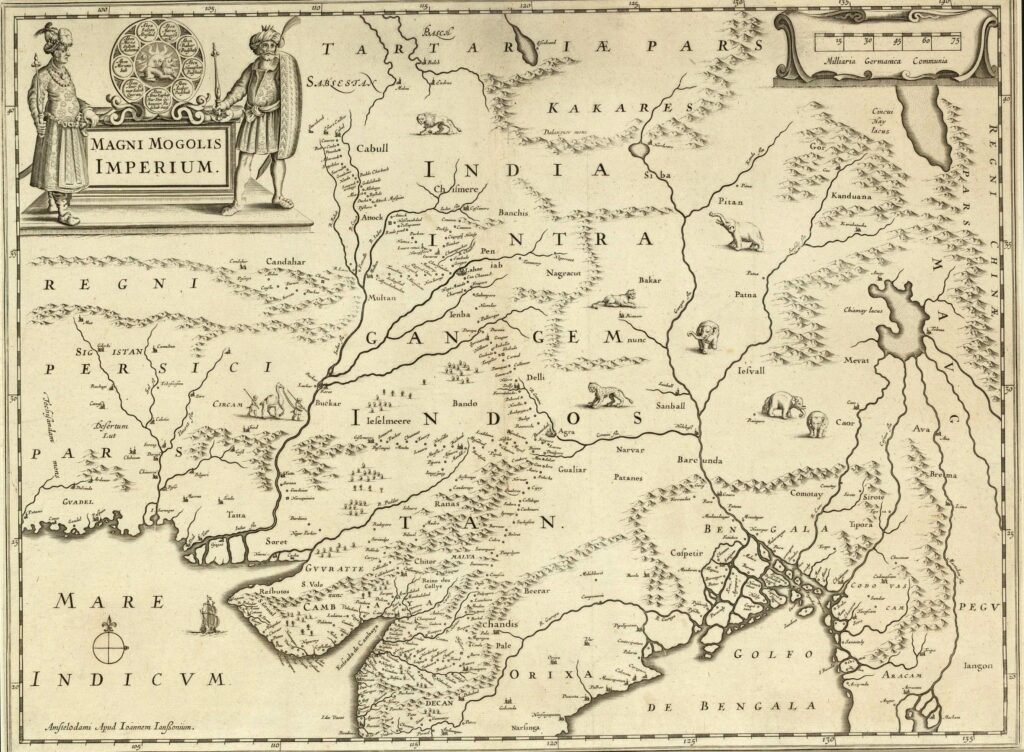
Magni Mogolis Imperium, 1641, Jan Jansson © Sarmaya Arts Foundation (2021.12.7)
Sarais were generally large enclosures providing, boarding, stable, fodder and other such facilities to the travellers. The smaller ones in villages and towns were modest, mostly built of mud and straw and used for emergency overnight stays, whereas the ones in cities such as Delhi, Lahore, Patna and Agra could be grand and palatial accommodating the needs of thousands of people and their horses. “But sarais in isolation didn’t work – they had to be associated with hamaams or markets to be relevant,” says Dr Irfan. “Empty spaces in the middle of sarais were typically used to set up markets.” Most sarais were defined by the marketplaces and baths that could be accessed in and around it.
Much of what we know about sarais has been documented in the accounts of European travellers. Jean-Baptiste Tavernier, Peter Mundy and Rudyard Kipling make several references to the sarais spread across the Mughal empire in their travelogues and stories. Niccolao Manucci in his book Storio do Mogor or Mughal India narrates how sarais were a medieval melting-pot, serving as a meeting point for traders, craftsmen, adventurers and sometimes thieves and conmen, providing all manner of employment for citizens.
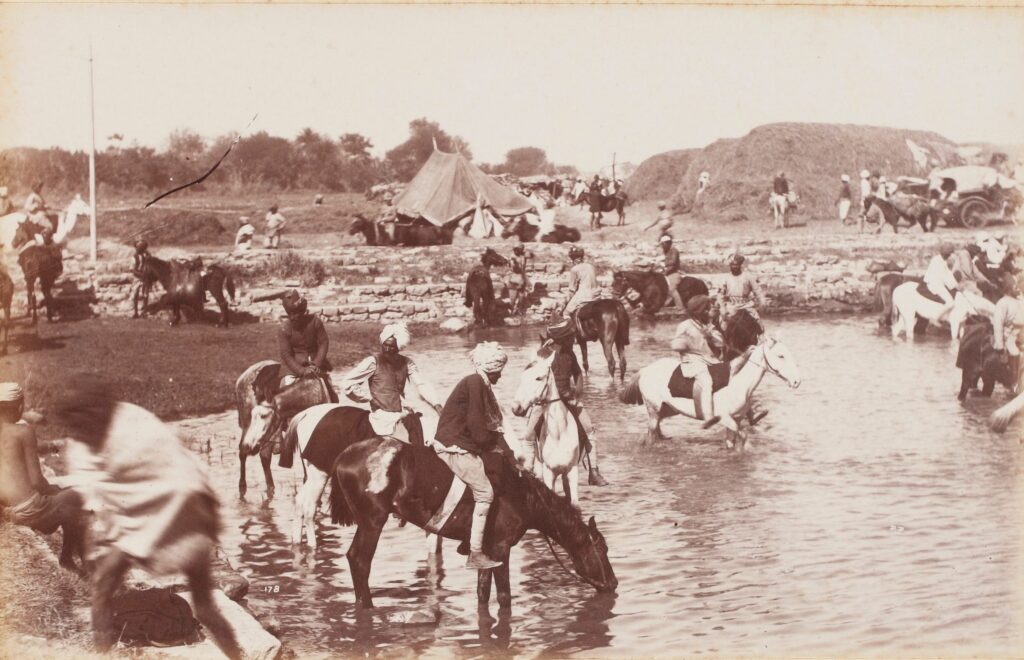
Watering horses, Badli-ka-Sarai, Delhi © Sarmaya Arts Foundation (2017.1.2(17))
In season, there would be great demand for the services of barbers, washermen, tailors, musicians, dancing girls and boys, astrologers and many others. These sarais were brimming with business from the traders, merchants, pilgrims, state officials and their troopers as the money economy and the resulting expansion of commerce in the 16th and 17th centuries became intensified. As such, opportunities to hear the latest commercial or political gossip were also plentiful, helping people clinch deals and make advantageous contacts. Dr Irfan elaborates, “[Sarais] were a hub of a lot of activity. A stage where common public culture and public life unfolded. Also where certain interaction was happening between the elite classes and common masses, because even the elites received services of the sarai. Poets and satirists congregated to critique, dramatise and comment on everything from daily gossip to the issues surrounding the ruling class.”
In 1867, the British enacted a law regulating the functioning of sarais. While the Sarai Act seemed to democratise the use of these public spaces, the British law after which it was modelled actually gave the judiciary control over the daily functioning of sarais. “This seemingly harmless law might be linked to the British trying to keep an eye on any anti-imperial activities in these meeting places and markets. There’s evidence of British spies found at these sarais during the late Mughal period,” says Dr Irfan.
The stated mission of the Sarai Act was anyway redundant because sarais were already multicultural spaces open to people of all communities and classes. This played out in the kitchens too, as Dr Irfan explains. “Interestingly, we have evidence of two kinds of kitchens being maintained at the sarai – to cook and serve food to Hindus and those who did not eat meat and a different one to cater to food for Muslims.” For every sarai with a mosque, the next one contained a Hindu temple.
But the Europeans did not understand the appeal of the sarai. In his memoir titled Travels in the Mogul Empire, French physician and traveller Francois Bernier was severely critical of Indian sarais, declaring them no better than large barns where hundreds of human beings mingled with horses, mules and camels, and which were too hot in summer and too cold in winter. But Bernier makes a notable exception for the caravanaserai built by Emperor Shah Jahan’s daughter, Jahanara Begum. Forming part of the original Chandni Chowk of Delhi, this sarai so impressed the Frenchman, he proposed that Paris should copy it and build similarly grand structures to host travellers.
Today, neither Jahanara Begum’s sarai nor any others survive from the Mughal era. But there’s no doubt as to the contribution of the Indian subcontinent’s vast sarai network to the coffers of the Mughal empire. The existence of these sarais made possible the exchange of goods, services, people and ideas throughout the vast realms of the kingdom, which in turn made it one of the wealthiest and most culturally vibrant nations of the time.
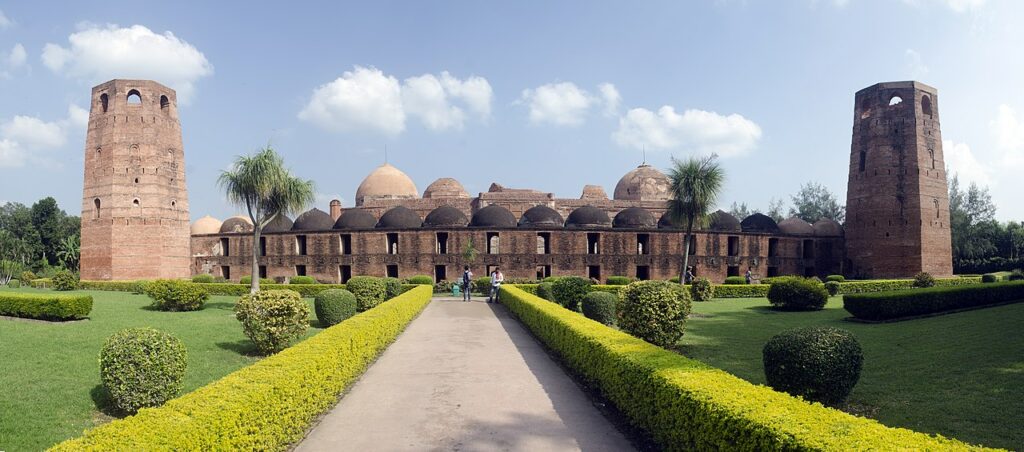
Katra Mosque is a caravanaserai in Murshidabad, Bengal. Image by Rangan Datta Wiki – Own work, CC BY-SA 4.0
References
- Anjum, Nazer Aziz. “‘SARAIS’ IN MUGHAL INDIA.” Proceedings of the Indian History Congress, vol. 71, 2010, pp. 358–64. JSTOR. Accessed 24 Mar. 2023.
- Roads and Communications in Mughal India, Abul Khair Muhammad Farooque, December 1973. Page 141
- Kumar, Ravindra. “ADMINISTRATION OF THE SARAIS IN MUGHAL INDIA.” Proceedings of the Indian History Congress 39 (1978): 464–72.
- The Travels of Peter Mundy in Europe and Asia 1608 – 1667 Vol. II: Travels in Asia, 1628 – 1634.
- The Agrarian System of Mughal India, 1963, Irfan Habib

